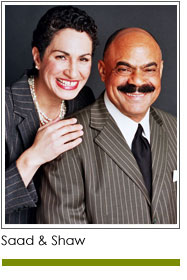 Fundraising is the process of attracting people and resources. Yes, it’s about raising money. But it’s also about “how” you raise money. We believe that fundraising should be infused into all aspects of an organization’s culture. It needs to be a shared responsibility that is as important as what is defined as the “work” of an organization. In a nonprofit, it is unsustainable to separate the two.
Fundraising is the process of attracting people and resources. Yes, it’s about raising money. But it’s also about “how” you raise money. We believe that fundraising should be infused into all aspects of an organization’s culture. It needs to be a shared responsibility that is as important as what is defined as the “work” of an organization. In a nonprofit, it is unsustainable to separate the two.
We encourage you to read Beyond Fundraising: What does it mean to build a culture of philanthropy? This report was written by Cynthia M. Gibson and produced by the Evelyn and Walter Haas, Jr. Fund. The report shares four main topics: shared responsibility for development; integration and alignment with mission; a focus on fundraising as engagement; and strong donor relationships.
With this column we focus on integration and alignment with mission. Gibson writes, “In organizations with a culture of philanthropy, fund development is a valued and mission aligned component of the organization’s overall work, rather than a standalone function. Organizations with a culture of philanthropy see fund development as more than just raising money or a management function; they see it as baked into everything they do, including their overall missions.”
We often work with organizations that have valuable missions and visions, achievable goals, working strategies, and not enough funding to bring these to life. In these cases the board and executive leadership are left to implement a partial vision with limited programming and resources. Over time an under-funded organization can develop a culture that is far different from the founding mission and vision.
It is also over time that a culture of fundraising (or philanthropy) can be built. The culture change starts when all parties within an organization focus on both program development and fund development.
Integrating fund development (fundraising) into the program development process could yield different programs, partners, strategies or timelines that are most beneficial. It could also force difficult discussions about priorities and resources before a crisis arises. A frequently used method for setting program priorities results in a mandate for the development office or fundraising team to raise specific amounts for specific priorities.
Bringing development professionals and fundraising volunteers into the program development process – and the budget setting process – can influence how decisions are made. For example, those individuals who know your organization’s donors and funders can provide a perspective on which gifts and grants may not renew in the coming year, and who might be interested – or not interested – in funding specific programs. It is better to know this information earlier than later. This can build a bridge between organizations and donors that values donors as partners rather than a revenue source.
Gibson makes it clear, “building a culture of philanthropy means viewing fundraising as a tactic for achieving larger programmatic goals and mission, rather than an end unto itself.”
You can read Beyond Fundraising: What does it mean to build a culture of philanthropy? online at http://bit.ly/FundCulture.
Copyright 2016 – Mel and Pearl Shaw
Mel and Pearl Shaw are authors of the new book FUNdraising Good Times Classics Vol. 1 now available on Amazon.com. For help growing your fundraising visit www.saadandshaw.com or call (901) 522-8727.












